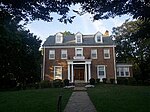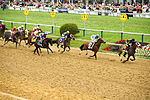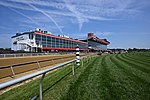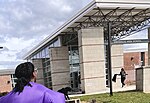Congregation Shomrei Emunah (Baltimore)
1971 establishments in Maryland21st-century synagogues in the United StatesAshkenazi Jewish culture in BaltimoreAshkenazi synagoguesCheswolde, Baltimore ... and 8 more
Jewish organizations established in 1971Lithuanian-American culture in BaltimoreLithuanian-Jewish culture in MarylandOrthodox Judaism in BaltimoreOrthodox synagogues in MarylandSynagogues completed in 2007Synagogues in BaltimoreSynagogues in Maryland
Congregation Shomrei Emunah (Hebrew: קהילת שומרי אמונה) is an Orthodox Jewish synagogue in the Greenspring neighborhood of Baltimore, Maryland. Rabbi Binyamin Marwick is the synagogue's rabbi.
Excerpt from the Wikipedia article Congregation Shomrei Emunah (Baltimore) (License: CC BY-SA 3.0, Authors).Congregation Shomrei Emunah (Baltimore)
Greenspring Avenue, Baltimore
Geographical coordinates (GPS) Address External links Nearby Places Show on map
Geographical coordinates (GPS)
| Latitude | Longitude |
|---|---|
| N 39.368888888889 ° | E -76.680277777778 ° |
Address
Shomrei Emunah
Greenspring Avenue 6221
21209 Baltimore
Maryland, United States
Open on Google Maps






